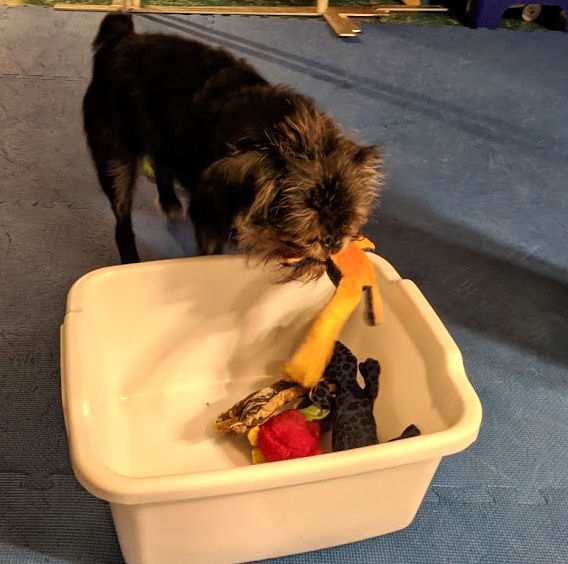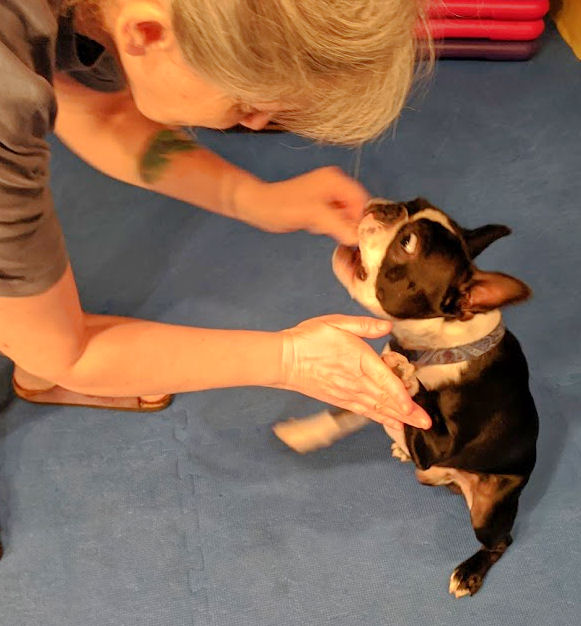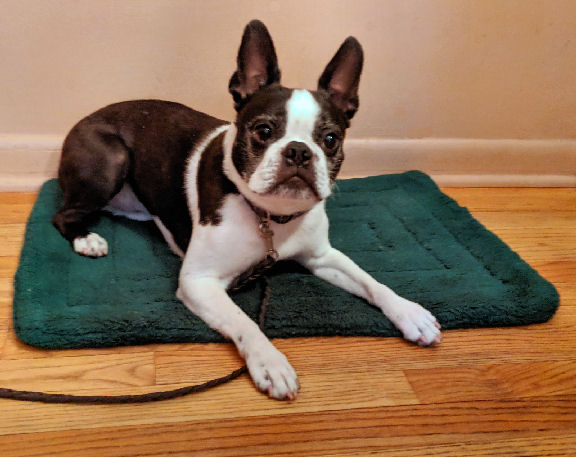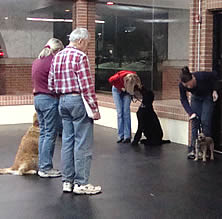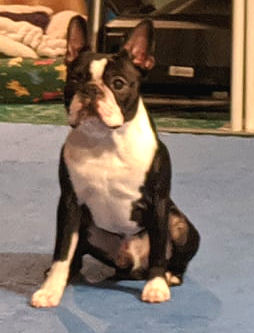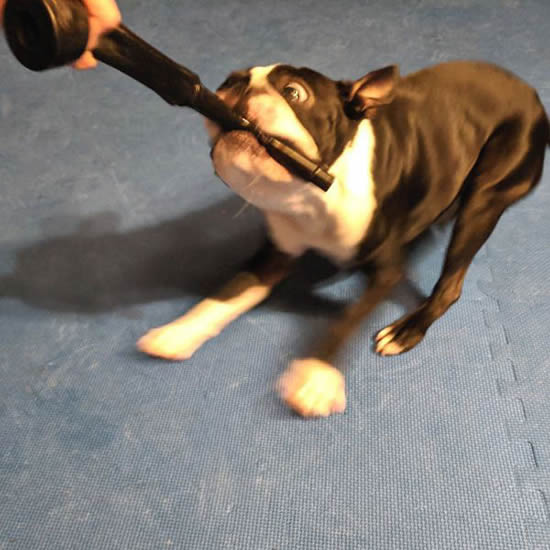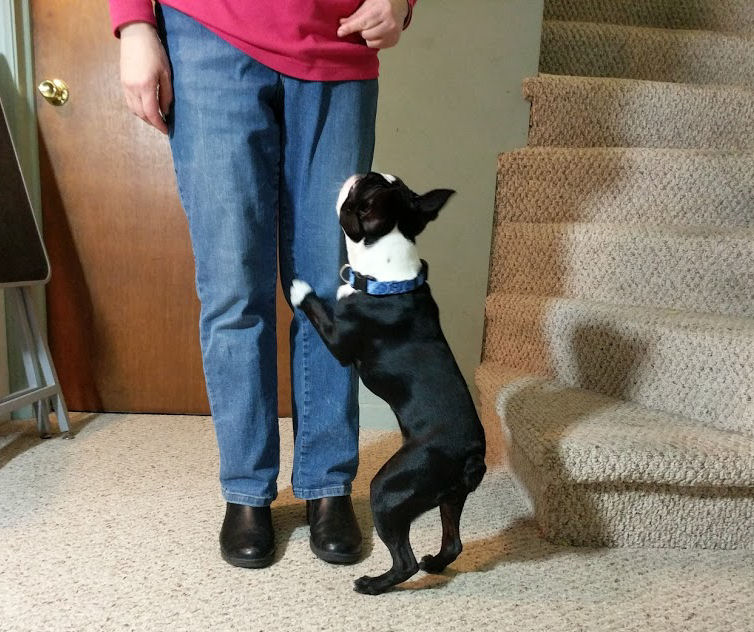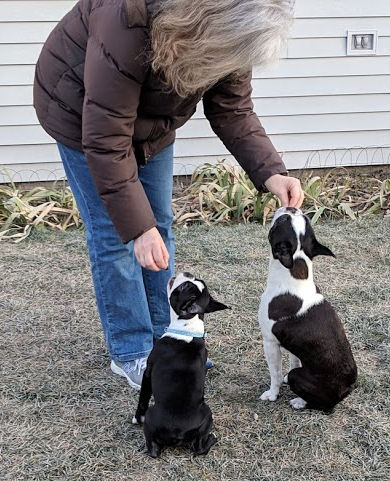Teaching your dog to “Tap” is another little training game to play anywhere.
Little games that don’t need anything but you, your dog, and some treats are useful wherever you go. If you’re waiting at the vet’s office the game can help reduce your dog’s stress. If your dog obsesses on the neighbor mowing the lawn, you can get attention back by playing a game. Whenever you need to reclaim your dog’s focus, having a few games to play will make it easy. (“Touch” is another game we talked about a couple of months ago.)
Making sure that every interaction with your dog is positive and fun ensures that your dog will want to engage with you. If he/she can always count on having fun (and treats!), there’s nothing better. Not even the squirrel climbing the tree across the street.
Teaching “tap”
Does your dog use his/her front paws to get your attention? Many dogs do, and you can make use of this habit to lay the foundation for the game.
For us, Booker is the one who uses his paws the most to get attention. As a matter of fact, it’s really annoying. You’re sitting there on the couch and he comes over next to you and grabs your hand. Which is how television channels change and texts turn into gibberish around here.
Instead of getting annoyed, use the dog’s natural habit to play the game.
Tapping the shoe
Our vision of the game has the dog “tapping” the toe of a shoe with his paw. To change Booker’s annoying habit into a fun game, we brought a shoe with us when we went to relax on the couch. Teaching your dog to tap may require equally strange props!
With the shoe either next to us or on our lap, we ignored Booker pawing at us until he touched the shoe with his paw. Then he got attention, pets, and treats! That’s really all it takes to get a dog choosing to play a game. It’s fun to watch them figure out what action is triggering the reward.
Do it again!
The hardest part is being patient. Booker “patted” lots of different things until he zeroed in on the shoe. The game stays the same until the dog figures out that tapping the shoe is what gets the cookies!
Once your dog is successful about three-quarters of the time, it’s time to start asking for more. If the shoe was on your lap, can the dog tap it when it’s next to you? How about if the shoe is on the floor? Across the room? And finally, how about on your foot?
Tap dancing
The goal of the game is for the dog to tap your toes alternately, left and right. Once your dog has the idea of tapping a shoe, the rest should be relatively simple. Remember to keep moving forward, but not so fast that your dog (or you!) get frustrated. If your dog is having some trouble taking the next step, wherever you are, just go back and reinforce where she was successful. Small steps get you there!
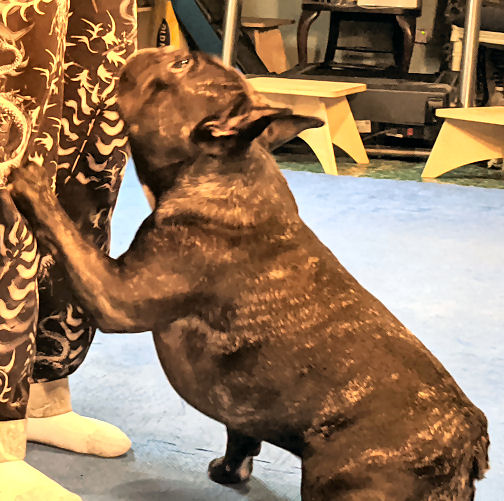
It’s okay to set your own criteria for every game you play with your dog. Torque, Hope’s French Bulldog, likes to “tap” her shins rather than her shoes. It wasn’t worth it to Hope to change his mind – he’s engaged, having fun, alternating his “taps,” and playing with her. Shifting his focus down to her shoes didn’t seem important. Especially when it’s easier to see his cute little face when he taps her shins!


